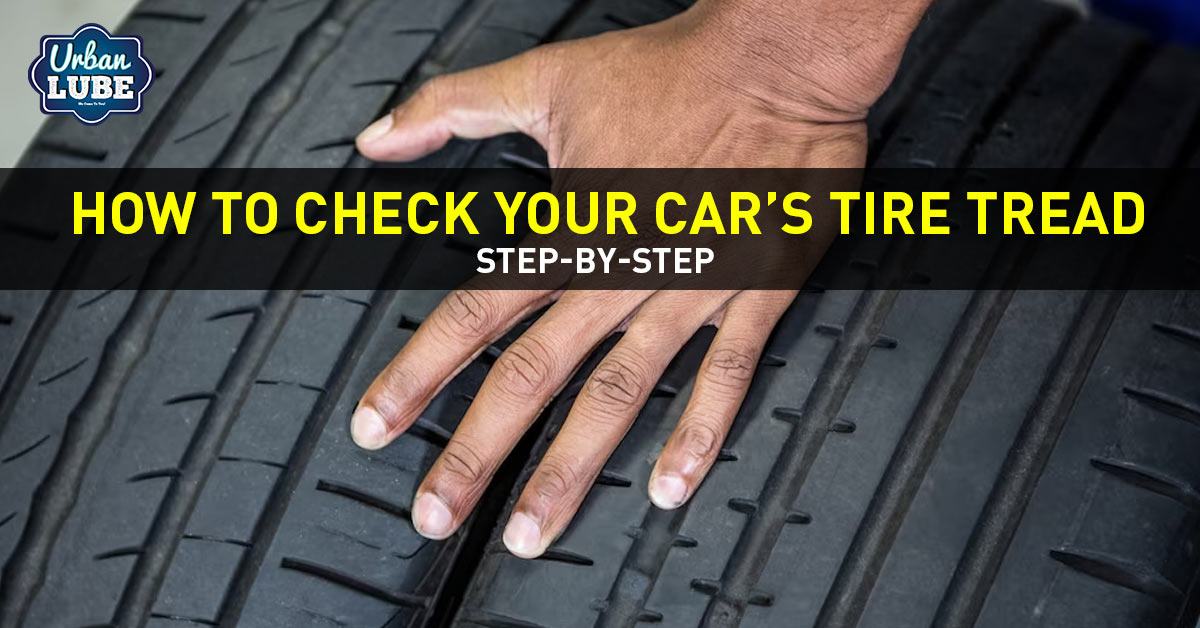
As a responsible driver, you must always ensure that your vehicle is in good condition, and that includes checking your tires’ tread depth. Tire treads are the grooves on the surface of the tire that provide traction and help prevent hydroplaning. Over time, the tire tread will wear out, and it’s essential to check it regularly to avoid any mishaps on the road. In this blog, we’ll guide you through a step-by-step process of checking your car’s tire tread and knowing when it’s time to replace your tires.
Understanding Tire Tread
Before we dive into how to check your car’s tire tread, let’s first understand what tire tread is. The tire tread is the rubber that makes contact with the road surface. It’s what provides traction and helps you maintain control of your car. Tire tread is designed to wear down over time, which is why it’s essential to check your tire tread regularly.
Why You Need to Check Your Tire Tread
As your tire tread wears down, it becomes less effective at providing traction on the road. This can make it more difficult to control your car, especially in wet or slippery conditions. Additionally, as your tire tread wears down, your chances of experiencing a blowout or a flat tire increase. By checking your tire tread regularly, you can catch any issues early and take action before they become a more significant problem.
Understanding Tire Tread Depth
Before we proceed, let’s understand what tire tread depth is and why it matters. Tread depth refers to the vertical measurement between the top of the tread rubber to the bottom of the tire’s deepest grooves. In the United States, the standard measurement for tire tread depth is 32nds of an inch. When your tire’s tread depth is too low, it can negatively affect your car’s braking, handling, and stability, especially in wet or slippery conditions.
You May Like: Difference Between Summer Tires and All Season Tires
Checking Your Tire Tread with a Penny
One of the easiest ways to check your tire tread depth is by using a penny. Here’s how you can do it:
- Get a penny and hold it so that Lincoln’s head is facing down.
- Insert the penny into the tire tread grooves at various locations around the tire.
- Observe Lincoln’s head and the wording “In God We Trust.” If the top of Lincoln’s head is always visible, your tire tread is too low, and it’s time to replace your tires.
Checking Your Tire Tread with a Tire Tread Depth Gauge
If you want to be more precise in measuring your tire tread depth, you can use a tire tread depth gauge. A tire tread depth gauge is a small tool that measures the distance between the top of the tread and the bottom of the tire’s grooves. Here’s how you can use it:
- Place the probe of the tire tread depth gauge into the tire groove.
- Hold the gauge perpendicular to the tire tread.
- Observe the measurement and compare it to the manufacturer’s recommended minimum tread depth.
Understanding Tire Tread Wear Patterns
Aside from measuring the depth of your tire tread, you must also check for any unusual tire tread wear patterns. Tire tread wear patterns can indicate a problem with your car’s alignment, suspension, or tire pressure. Here are some common tire tread wear patterns and what they mean:
Center wear: If your tire’s tread is more worn in the center, it means you’ve been driving with over-inflated tires.
Edge wear: If your tire’s tread is more worn on the edges, it means you’ve been driving with under-inflated tires.
Cupping wear: If your tire’s tread has scalloped dips around the edge, it means there’s a problem with your car’s suspension.
Feathering wear: If your tire’s tread has smooth edges on one side and sharp edges on the other, it means there’s a problem with your car’s alignment.
When to Replace Your Tires
Now that you know how to check your tire tread, you must also know when it’s time to replace your tires. The general rule of thumb is to replace your tires when the tread depth is at 2/32 of an inch or less. However, some states have laws that require you to replace your tires when the tread depth is at 4/32 of an inch or less. It’s essential to check your local laws and regulations to avoid any penalties or fines.
Conclusion
Checking your car’s tire tread is an essential part of car maintenance. By regularly checking your tire tread, you can ensure that your tires are providing the traction you need to stay safe on the road. Remember, if your tire tread is too shallow, it’s time to replace your tires. By following the step-by-step process outlined in this blog, you can easily check your tire tread and keep yourself and your passengers safe on the road.
Ensure your car is ready with the right tires. Book an appointment for a tire change and installation from Urban Lube Calgary.
Read Next Blog:
